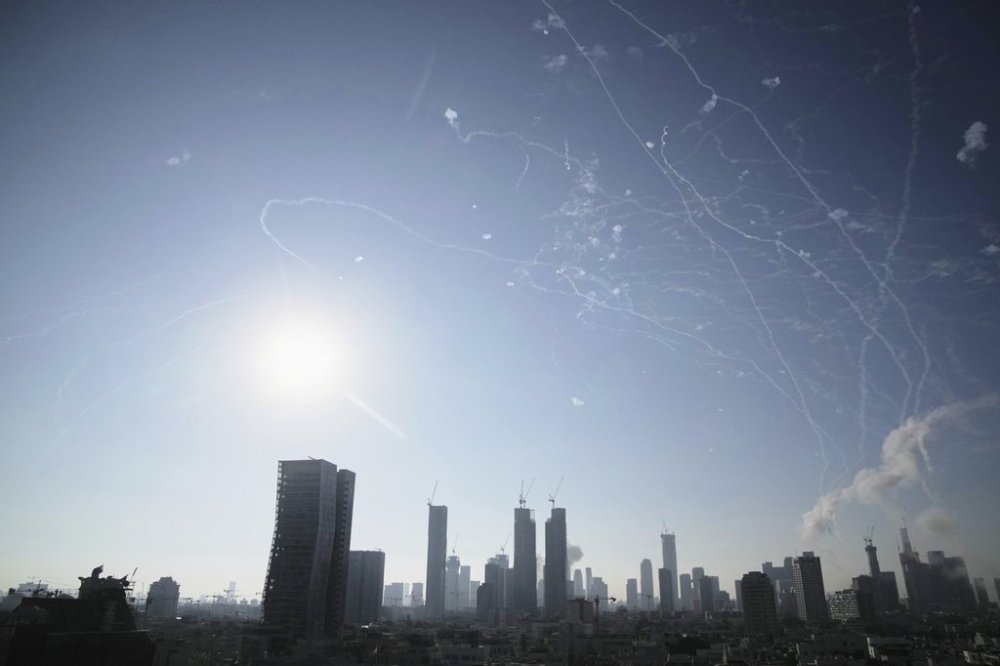Iranian missile strikes show Israel’s aerial defense array is not ironclad
Advertisement
Read this article for free:
or
Already have an account? Log in here »
To continue reading, please subscribe:
Monthly Digital Subscription
$0 for the first 4 weeks*
- Enjoy unlimited reading on winnipegfreepress.com
- Read the E-Edition, our digital replica newspaper
- Access News Break, our award-winning app
- Play interactive puzzles
*No charge for 4 weeks then price increases to the regular rate of $19.00 plus GST every four weeks. Offer available to new and qualified returning subscribers only. Cancel any time.
Monthly Digital Subscription
$4.75/week*
- Enjoy unlimited reading on winnipegfreepress.com
- Read the E-Edition, our digital replica newspaper
- Access News Break, our award-winning app
- Play interactive puzzles
*Billed as $19 plus GST every four weeks. Cancel any time.
To continue reading, please subscribe:
Add Free Press access to your Brandon Sun subscription for only an additional
$1 for the first 4 weeks*
*Your next subscription payment will increase by $1.00 and you will be charged $16.99 plus GST for four weeks. After four weeks, your payment will increase to $23.99 plus GST every four weeks.
Read unlimited articles for free today:
or
Already have an account? Log in here »
JERUSALEM (AP) — Iranian missiles again evaded Israel’s sophisticated aerial defense array on Thursday, striking a main hospital in the south as well as residential areas in the country’s populous center.
Israel has long relied on its multilayered missile defense system to protect communities around the country from rocket barrages from militants in Gaza or Lebanon. Since the wars in the Middle East erupted in 2023, that list has grown to include fire from rebels in Yemen and Iran.
Over the decades, Israel, with U.S. assistance, has developed a tiered system capable of detecting incoming fire and deploying only if the projectile is headed toward a population center or sensitive military or civilian infrastructure while letting other projectiles land in open spaces.

The array can shoot down short-range rockets to medium-range missiles to attack drones to ballistic missiles like those Iran has been firing.
But the military warns the system is not fool proof and while interception rates are generally high, enemy missiles can penetrate. Too many projectiles launched at once can overwhelm the system, which relies on a combination of technology and human decision-making to be effective.
Israeli authorities say at least 24 people have been killed by Iranian strikes since the fighting began on June 13, which has reduced homes, buildings and other property in multiple areas of the country to ruin.
Here’s a closer look at Israel’s air-defense system:
The Arrow
This system developed with the U.S. is designed to intercept long-range missiles, including the types of ballistic missiles Iran launched on Tuesday.
The Arrow, which operates outside the atmosphere, has also been used in the current war to intercept long-range missiles launched by Houthi militants in Yemen.
David’s Sling
Also developed with the U.S., David’s Sling is meant to intercept medium-range missiles, such as those possessed by Hezbollah in Lebanon. It has been deployed on multiple occasions throughout the war.
Iron Dome

This system, developed by Israel with U.S. backing, specializes in shooting down short-range rockets. It has intercepted thousands of rockets since it was activated early last decade – including thousands of interceptions during the current war against Hamas and Hezbollah. Israel says it has a success rate of over 90%.
Iron Beam
Israel is developing a new system to intercept incoming threats with laser technology. Israel has said this system will be a game changer because it would be much cheaper to operate than existing systems.
According to Israeli media reports, the cost of a single Iron Dome interception is about $50,000, while the other systems can run more than $2 million per missile. Iron Beam interceptions, by contrast, would cost a few dollars apiece, according to Israeli officials.
The army says the technology has been tested during the past 20 months of conflict, but the system is not yet operational.
___
This story was originally published on Oct. 2, 2024. It was updated Thursday.


